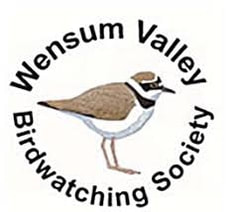|
Coordinator and Leader: Emily Leonard Reporter: David Laurie Species list: Nick Edwards Nine of us met at the How Hill Trust car park for an overcast and mild 9:00 start. Above was the impressive thatched house, built at the start of the 20th century by Norwich architect Edward Boardman on what must be one of the highest points in the Broads. It stands a massive 50 feet above sea level and is now home to the How Hill Trust and its Environmental Study Centre (you can read more at howhilltrust.org.uk, including the intriguing story of the Olympic Oak). We began our day by heading south on the road and through a hedge into woodlands and fields with Skylarks and Egyptian Geese. Turning right at The Limes we went along Blind Lane and then looped north around Buttle (a Norfolk word for Bittern) Marsh. The path here is elevated, giving a fine view over the marsh and River Ant. A forecast band of rain set in at this point, so apart from Long-tailed Tits smaller birds were not much in evidence.
Turning west we took the track that traces south to Ludham Bridge between the meandering River Ant and the How Hill Fen Nature Reserve. As the sky brightened and the weather eased we saw Gadwall, Teal, Shoveler, Wigeon, Pied Wagtail and Meadow Pipit as well as hearing a Cetti's Warbler. As usual, the latter kept itself well hidden. Improving weather brought Common Buzzard, Kestrel and a cream-headed Marsh Harrier into the air and, on the far side of the river, cattle on Horning Marshes were accompanied by four Cattle Egrets, stocky compared to Little Egret and with their yellow bills clear in the stronger light. After a stop at Ludham Bridge (with ice creams for the hardy), we returned along the same route. Blue sky and sun brought a group of Bearded Tits to the seed heads of the reeds, giving us splendid views. Back along the path we came across two more Marsh Harriers. They had different plumages to the first, one a male, so at least three were present. Heading back to How Hill House along the river we found Gadwall and two Little Grebes on the ornamental lake, and after that we adjourned to the car park for lunch. After experiencing the weirdly soft and spongy trunk of the tall Redwood by the car park, three of us made a tour around the ornamental gardens. Nuthatch was the only bird added but it was good to see plenty of Common Darter dragonflies taking advantage of the sheltered corners to bask in afternoon sun. It was a very enjoyable day and our thanks go to Emily for leading the walk and sharing her extensive local knowledge. How Hill was a new venue for me and I will definitely return to walk this route again. Bird List. Bearded Tit, Blackbird, Black-headed Gull, Blue Tit, Canada Goose Carrion Crow, Cattle Egret, Cetti's Warbler, Chaffinch, Collared Dove Common Buzzard, Common Gull, Cormorant, Dunnock, Egyptian Goose Goldcrest, Goldfinch, Great Spotted Woodpecker, Great Tit Greylag Goose, Jay, Kestrel, Lapwing, Linnet Little Egret, Little Grebe, Long-tailed Tit, Magpie, Mallard Marsh Harrier, Meadow Pipit, Moorhen, Mute Swan, Nuthatch Pheasant, Pied Wagtail, Pintail, Redwing, Reed Bunting Robin, Shoveler, Skylark, Snipe, Starling Stock Dove, Teal, Wigeon, Wood Pigeon, Wren
0 Comments
Leave a Reply. |
Please feel free to read through our reports from our monthly outdoor meetings. Archives
May 2024
Categories |

 RSS Feed
RSS Feed
